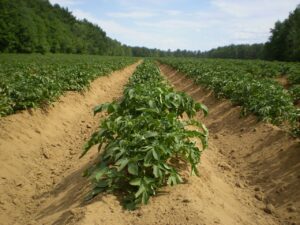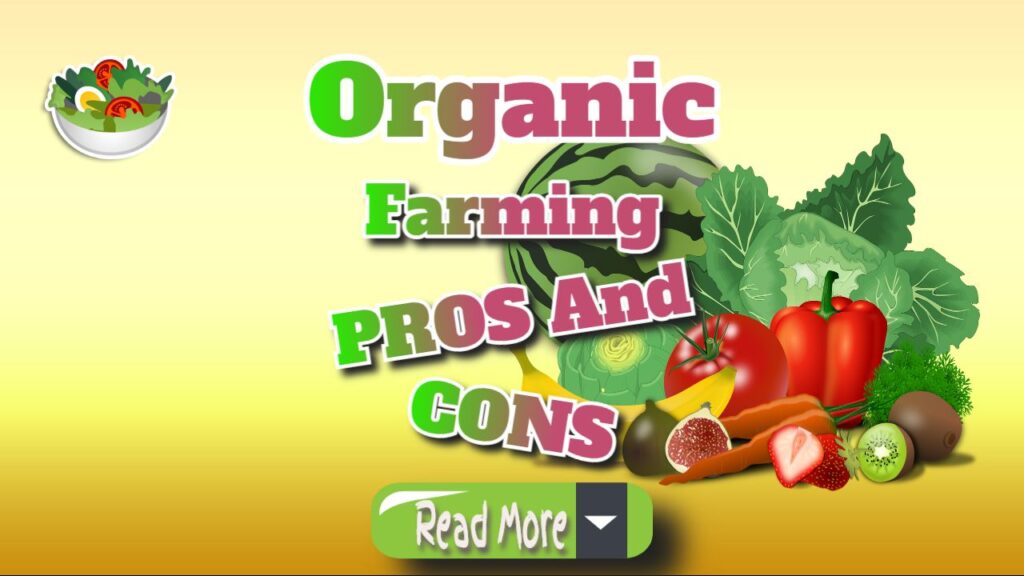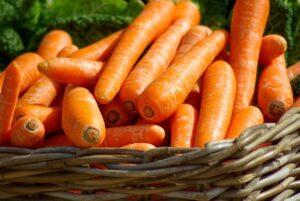Unlock the Secrets of Organic Farming: Your Comprehensive Guide
- Master the Essential Principles of Organic Farming
- Uncover the Wide-Ranging Benefits of Organic Farming
- Evaluate the Key Challenges Facing Organic Farming Practices
- Explore the Fundamental Features and Significance of Organic Farming
- Clarify the Core Values, Characteristics, and Advantages of Organic Farming
- Understand How Supporting Organic Farming Enhances Health and Environmental Quality
- Discover the Soil Association’s Insights on Organic Farming Practices
- Examine How Simone Thomas Wellness Advocates for Organic Farming
- Implement Effective Soil Conservation Techniques through Organic Practices
- Investigate Recent Scientific Research on Organic Farming’s Environmental Impact
- Gain Valuable Insights into the Cost Dynamics of Organic Products
- Conduct a Thorough Analysis of the Pros and Cons of Organic Farming
Master the Essential Principles of Organic Farming
Organic farming embodies a holistic approach to agriculture, focusing on the implementation of natural methods to cultivate crops, manage livestock, and produce poultry. This sustainable agricultural model emphasizes practices that include green manure, composting, biological pest control, and crop rotation. Each of these techniques not only boosts productivity but also significantly protects our environment. By fostering the natural cycling of resources, organic farming plays a pivotal role in maintaining biodiversity and achieving an ecological equilibrium, which is vital for sustainable food production over the long term. Among its cornerstone practices are the use of cover crops, application of animal manure, and strategic crop rotation to disrupt pest and disease cycles, enhance soil fertility, and bolster biological activity within soils, ultimately creating a resilient ecosystem that supports successful farming operations.
The core of organic farming lies in its dedication to effective ecosystem management, improving soil health while minimizing reliance on synthetic inputs. This includes the art and science of plant breeding to enhance crop resilience without resorting to genetic modification. Organic farmers adopt meticulous pest management techniques that avoid synthetic pesticides, favoring natural fertilizers instead. Innovative strategies promoted by organic farming advocates, such as the no-till revolution, highlight the accessibility and efficiency of these practices for gardeners and farmers alike, delivering both environmental and economic benefits without necessitating costly equipment or advanced technology.
The increasing popularity of organic farming can be attributed to growing concerns surrounding pesticide residues and the potential risks associated with genetically modified organisms (GMOs). Effective marketing strategies employed by advocates of organic farming have significantly influenced consumer preferences, encouraging many farmers to adopt organic methods with the expectation of higher profitability. However, this shift has also led to instances of fraudulent labeling, wherein conventional farmers misrepresent their produce as organic. One pressing challenge remains the need for reliable testing methods to effectively differentiate between organically grown crops and those treated with synthetic fertilizers, as the differences in the core biological characteristics of these plants may often be negligible.
Uncover the Wide-Ranging Benefits of Organic Farming
As the global population is projected to surge by billions in the coming century, the urgent challenge of sustainably feeding this expanding demographic has never been more critical. Current agricultural practices, especially conventional industrial methods, exert enormous pressure on our planet’s limited land resources, which are increasingly degraded due to intensive farming practices. Research from National Geographic News indicates that food production currently occupies nearly half of the Earth’s land area, threatening the remaining fertile zones. To tackle this pressing issue effectively, it is essential to conduct a comprehensive evaluation of both the strengths and limitations associated with modern industrial agriculture versus organic farming.
At the heart of organic farming is the complete prohibition of synthetic chemical fertilizers, antibiotics, herbicides, and pesticides. The primary goal of organic practices is to produce agricultural outputs—including fibers, grains, vegetables, fruits, and livestock—through the most natural and sustainable methods available. Organic farming excels in preserving our water and soil resources, maintaining ecological balance, and efficiently utilizing renewable resources. Nonetheless, it is crucial to acknowledge the potential drawbacks as well. In the forthcoming sections, we will delve into the myriad advantages and disadvantages linked to organic farming practices, providing a balanced view of this essential agricultural approach.
As your understanding of organic farming deepens, you may find yourself contemplating its importance and future implications. The rapidly growing global population necessitates a shift from conventional farming practices, which heavily rely on chemical inputs, to more sustainable alternatives. The detrimental effects of chemical fertilizers and pesticides on soil, air, and water quality underscore the urgent need for organic farming methods that prioritize ecological health and the production of non-toxic food options.
Despite comprising only 1% of the world’s agricultural land, organic farming presents a significant opportunity to address one of humanity’s greatest challenges: producing enough food for an anticipated population of 10 billion by 2050 without inducing widespread deforestation or environmental degradation. This perspective is supported by a study led by my PhD student, Jonathan Wachter, which analyzed numerous scientific investigations comparing the long-term sustainability of both organic and conventional agriculture. The research paper titled “Organic agriculture in the 21st century” employed the four primary sustainability criteria established by the National Academy of Sciences: productivity, economic viability, environmental soundness, and social justice.
Evaluate the Key Challenges Facing Organic Farming Practices
While organic farming offers a multitude of benefits, it is also accompanied by specific challenges that must be addressed. Research conducted by CNN indicates that the yields of organic crops may be significantly lower—by as much as 25%—compared to conventionally grown alternatives. This discrepancy in yield is influenced by various factors, including seasonal variations and crop types; however, the inherent challenges of organic cultivation often lead to slower growth rates. Additionally, the techniques used in organic farming frequently result in higher consumer prices than those associated with conventional food products.
The rising consumer demand for organic products has reshaped the market dynamics. Once viewed as a niche market for the affluent or environmentally conscious, organic food has gained broad acceptance across diverse demographics. Organic farming practices, which forgo artificial fertilizers and pesticides, favor traditional methods of pest and nutrient management, including crop rotation, natural barriers, and ecological pest control measures.
Over the past two decades, the organic agriculture sector has experienced remarkable expansion, with sales of organic foods and beverages surging from $1 billion in 1990 to an astounding $26.7 billion by 2010. This impressive growth has been fueled by annual increases ranging from 12% to 21% (OTA, 2011). Notably, by 2005, certified organic farms were reported in all 50 states across the U.S., covering over 4 million acres (USDA-ers, 2008). However, with nearly 70% of American consumers now purchasing organic products (Hartman Group, 2008), many organic farmers find it challenging to keep pace with the rapid growth of their market, leading to a supply-demand gap.
The burgeoning population in regions like Florida is intensifying development pressures that impact natural resources and contribute to environmental degradation. Embracing organic agriculture can help mitigate some of this environmental strain by promoting natural food production methods. By minimizing the use of pesticides and herbicides, organic farming fosters diverse ecosystems that include a wide variety of plants, insects, and wildlife (McIlwain 2004). Furthermore, organic practices are generally less energy-intensive and generate minimal waste compared to conventional farming methods. A study from Washington State University revealed that growing organic apples is approximately 7% more energy-efficient than traditional apple farming (McIlwain 2004).
Explore the Fundamental Features and Significance of Organic Farming
Organic farming is defined by its steadfast commitment to maintaining soil health and fostering sustainability, ensuring that agricultural practices do not degrade the land or contribute to desertification. This restorative approach emphasizes environmental stewardship and aims to preserve the health of our ecosystems for future generations. Sustainability is indeed at the core of organic farming’s philosophy!
To keep readers informed about the latest trends in organic farming, Organic Farming Magazine has emerged as the UK’s premier publication, released up to three times a year by the Soil Association. Each edition provides invaluable insights into news, policy shifts, and market trends, alongside in-depth technical articles and reports detailing the most recent field trials and research related to organic farming practices. Topics covered include livestock management, horticulture, and various agricultural disciplines.
A key element of organic farming is the adoption of organic pest control, which completely avoids chemical pesticides. This method not only protects the soil’s integrity but also nurtures a healthier ecosystem. When executed effectively, organic pest control can sustain healthy crops for generations. Understanding the mechanics of organic pest control is essential for anyone interested in the principles of organic farming.
Organic fruits and vegetables are increasingly sought after at farmers’ markets, propelled by a growing public awareness regarding health and nutrition. Establishing an orchard requires careful planning and attention to detail. This resource offers essential information on optimizing planting strategies while fostering a connection with nature. It also discusses sustainable farming techniques alongside advanced methods such as grafting different tree varieties. Furthermore, it provides insights into which species to cultivate, what to avoid, and crucial information regarding biodiversity and pollination practices that support organic farming.
Clarify the Core Values, Characteristics, and Advantages of Organic Farming
While modern agricultural practices present certain advantages, the misuse of pesticides can result in detrimental effects on plants, animals, and the environment. Organic farming stands as a sustainable alternative that safeguards the health of our ecosystems. In the United States, nearly 44% of agricultural imports consist of fruits, vegetables, wine, hops, and various specialty crops. This reliance on imports can lead to ethical dilemmas and social concerns within farming communities, as some individuals may exploit labor forces to cultivate crops on their behalf.
Understand How Supporting Organic Farming Enhances Health and Environmental Quality
Embracing organic farming practices yields advantages not only for the soil and plants but also for the broader ecosystem, which encompasses animals and humans alike. Organic farming practices, as highlighted by Foam Organics International, provide a multitude of benefits.
Nevertheless, it is important to recognize that organic food often comes with a higher price tag compared to non-organic alternatives. The benefits of consuming organic food extend beyond taste and nutrition; they may also reduce your exposure to antibiotic-resistant bacteria. Additionally, organic products can be prepared and frozen without significantly compromising their nutrient density. While organic food may not always be the most economical choice, its production methods encourage health and sustainability, making it a valuable investment for discerning consumers.
Currently, organic farming constitutes only about 1% of the global agricultural landscape, underscoring a significant opportunity for growth. This limited presence poses challenges not only for food quality but also for land preservation and planetary health. Organic farming practices play a crucial role in maintaining the soil’s organic composition, helping to mitigate the ongoing destruction of the ozone layer caused by pesticides and emissions from various agricultural machinery.
Organic milk serves as an exemplary illustration of the advantages offered by organic farming. Many individuals who are lactose intolerant opt for soy milk as an alternative; however, organic options frequently provide superior health benefits. Taste preferences also significantly influence consumer choices, with many finding organically produced food to be more flavorful and satisfying. It’s worth noting that the USDA mandates that at least 70% of ingredients in products labeled as organic must come from organic sources. Concerns about synthetic additives in the food supply have emerged, as they have been linked to serious health issues, including infertility, certain cancers, Parkinson’s disease, and autoimmune disorders.
Discover the Soil Association’s Insights on Organic Farming Practices
The environmental consequences of synthetic fertilizers are considerable; their runoff into waterways poses significant threats to aquatic ecosystems and overall water quality. In contrast, organic fertilizers do not leach from the soil as readily and contribute positively to soil structure. The Organic Trade Association reports that organic fertilizers can enhance biodiversity by up to 30% compared to their synthetic counterparts.
The Organic Farming Digest, published from 1946 to 1954, holds the distinction of being the first magazine dedicated to organic farming, produced by an agricultural association based in Sydney. This quarterly publication featured contributions from Australian authors and international experts, covering a diverse range of topics related to organic farming and gardening. Eventually, the publication was adopted as the official magazine of the Living Soil Association of Tasmania, with its final issue released in December 1954.
As defined by the USDA Organic Agriculture Study Team, organic farming is recognized as a production system that largely avoids or eliminates the use of synthetic fertilizers, pesticides, growth regulators, and feed additives. Instead, it depends on techniques such as crop rotation, biological pest control, animal manure, crop residues, and mechanical tillage to boost soil productivity and manage pests. Organic farmers aim to collaborate harmoniously with nature, nurturing biodiversity to create a balanced ecosystem rather than relying on artificial inputs.
The U.S. Department of Agriculture characterizes organic farming as an agricultural system that adapts to site-specific conditions and integrates cultural, biological, and mechanical practices to promote resource cycling, support ecological balance, and maintain biodiversity. Essentially, organic agriculture prioritizes natural methods over synthetic ones to cultivate healthy crops and foster fertile soils.
Implement Effective Soil Conservation Techniques through Organic Practices
The pursuit of a sustainable and green environment has become a global priority. Research indicates that organic agriculture can significantly contribute to this goal. Long-term studies demonstrate that organic farming not only nurtures ecological harmony and biodiversity but also sustains biological cycles that are vital for environmental sustainability. The primary objectives of organic farming include effective soil management and conservation, nutrient cycling, ecological balance, and the preservation of biodiversity. These practices are essential in alleviating the impacts of global climate change while furthering environmental conservation efforts.
As previously noted, pest control in organic farming heavily relies on crop management and biological control strategies. The ban on synthetic fertilizers and pesticides helps preserve natural predators and beneficial insects, enhancing the overall health of the ecosystem. This elimination of harmful pesticides increases the diversity of crop pollinators and reduces pesticide residues in food products. Organic farms, managed with a focus on biodiversity, create environments where microorganisms thrive, leading to improved soil fertility and greater ecosystem sustainability. Diverse cropping systems and the cultivation of hedgerows provide habitats for beneficial insects and wildlife, further enhancing biodiversity within organic farming systems.
Investigate Recent Scientific Research on Organic Farming’s Environmental Impact
1 January, 2021
Research suggests that genetically modified organisms (GMOs) can adversely affect local biodiversity. While industrial agriculture provides consumers with a broader variety of food choices and promotes balanced diets, the introduction of GMOs has sparked significant controversy among consumers. Understanding the implications of GMOs, along with the distinctions between GMO, non-GMO, and organic crops, is critical for making informed consumer choices and shaping agricultural practices.
Gain Valuable Insights into the Cost Dynamics of Organic Products
The pricing of organic food typically exceeds that of conventional produce, often by considerable margins. The organic food market lacks the clearly defined pricing structures found in other agricultural sectors, presenting challenges for specialty farmers competing in the marketplace. Many communities have responded by establishing food cooperatives with local farmers, enabling consumers to prepay for their organic produce, which they can collect at the end of the growing season.
There is no denying that organic products often command a premium—prices can be 50% to 300% higher than those of conventional alternatives. The labor-intensive nature of organic farming contributes to these price disparities. Nevertheless, organic products yield significantly higher returns on investment for both retailers and farmers. Consumers are increasingly willing to pay more for organically produced items, although the supply remains limited.
Moreover, organic food often has a shorter shelf life compared to conventional products. For farmers, producing crops for the organic market entails heightened physical demands. While conventional farming emphasizes maximizing yields of specific crops, organic farming strategies necessitate minimizing off-farm inputs and external factors that may affect growth. Nonetheless, the eco-friendly practices associated with organic farming contribute positively to ecological balance and sustainability.
The development of organic farming practices by “Kusto Agro” illustrates a growing commitment to expanding cultivated land and increasing crop diversity. In Europe, organic products have gained popularity among consumers, despite their higher costs. This trend signifies a profitable business opportunity as the global market for organic products continues to expand at an annual growth rate of 10-15%. However, to compete internationally, obtaining proper certification is essential.
While organic farming presents numerous benefits, it is crucial to recognize its limitations and challenges. We will explore the most significant pros and cons of organic farming practices in the upcoming section.

Conduct a Thorough Analysis of the Pros and Cons of Organic Farming
Written by Behind the Plough | Feb 13, 2019, | Agricultural Resources, Organic Farming
The ongoing debate surrounding conventional versus organic farming continues to captivate public attention. However, it is essential to recognize that both farming methods possess distinct advantages and disadvantages. Ultimately, the decision regarding which practices to adopt rests with individual farmers, who must evaluate their unique circumstances and aspirations.
While organic food frequently has a shorter shelf life compared to its conventional counterparts, producing crops for market can be physically demanding for farmers. Conventional agricultural methods may prioritize growing specific, high-yield crops, whereas organic farming necessitates a more integrated approach that minimizes reliance on external inputs. Organic farming methods are inherently more environmentally friendly, yet they also present their own set of challenges, particularly in maintaining soil quality and ecological balance.
The management of weeds, pests, and plant diseases within organic farming requires a comprehensive and integrated approach. This systems-based strategy employs a variety of tools and techniques rather than relying solely on one method, such as pesticide application. This approach, known as Integrated Pest Management (IPM), enhances the effectiveness of organic-approved pesticides while potentially reducing overall usage. IPM is not a new concept; integrated strategies have been utilized for centuries, albeit without a standardized term.
At its core, organic farming embodies the principle of interconnectedness among soil, plants, animals, and humans. Its role in sustainable agricultural practices is to enhance the health of both the environment and the food system, starting at the microbial level within the soil and extending up the food chain. Organic farming emphasizes the responsible management of ecological resources, ensuring equitable production and consumption practices for all living beings. The guiding principles of precaution, care, and responsibility are vital for establishing a healthy, safe, and environmentally sound agricultural economy for future generations.
Organic agriculture is characterized by its prohibition of synthetic agricultural chemicals, including fertilizers, pesticides, herbicides, and insecticides. The use of genetically modified crops is also strictly avoided. Organic farming practices have a long history, and the demand for organic products is witnessing a resurgence as consumers become increasingly aware of the








What a fascinating exploration of organic farming! Your post touches on so many critical aspects of a subject that not only impacts our food systems but also has far-reaching implications for our health, environment, and community well-being.
This guide highlights some crucial aspects of organic farming, but I can’t help but feel that while we discuss its principles and benefits, it’s just as important to acknowledge the practical realities faced by many who strive to adopt these methods. For instance, a common challenge is the limited access smaller farms have to resources such as organic seeds, which can impede efforts to fully transition.
This guide does a wonderful job of highlighting both the principles and the multifaceted impact of organic farming. I’ve always appreciated how organic practices not only focus on sustainability but also foster a deeper connection to our environment.
It’s encouraging to hear that the guide resonated with you. The relationship between organic farming and environmental stewardship is fascinating. Organic practices not only aim for sustainability in terms of soil health and biodiversity but also nurture a sense of community among producers and consumers.